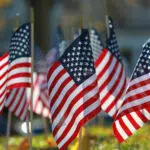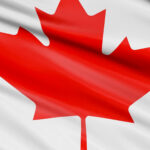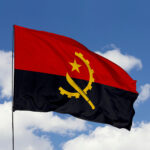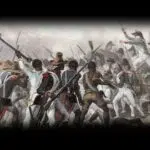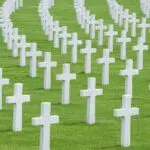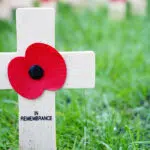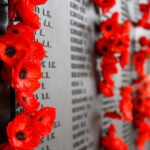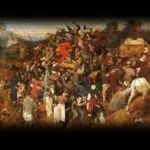When is Remembrance Day 2025?
Remembrance Day, also known as Poppy Day due to the symbol of the remembrance poppy, is a day observed in Commonwealth member states. Countries such as Australia, Canada, and the United Kingdom observe Remembrance Day on the 11th hour of the 11th day of the 11th month.
History of Remembrance Day
At 11 A.M. on November 11, 1918, the guns on the Western Front fell silent after more than four years of continuous warfare. The allied armies had driven the Germans back, having inflicted heavy defeats upon them over the preceding four months. In November, the Germans called for an armistice, or suspension of fighting, in order to secure a peace settlement. They accepted allied terms that amounted to an unconditional surrender.
The 11th hour of the 11th day of the 11th month attained a special significance in the post-war years. The moment when hostilities ceased on the Western Front became universally associated with the remembrance of those who had died in the war. This first modern world conflict had brought about the mobilization of over 70 million people and left between nine million and 13 million dead, perhaps as many as one-third of them with no known grave. The allied nations chose this day and time for the commemoration of their dead soldiers.
On the first anniversary of the armistice in 1919, two minutes’ silence was instituted as part of the main commemorative ceremony at the new Cenotaph in London. The silence was proposed by Australian journalist Edward Honey, who was working in Fleet Street. At about the same time, a South African statesman made a similar proposal to the British Cabinet, which endorsed it.
The tradition of Remembrance Day evolved out of Armistice Day. The initial Armistice Day began at Buckingham Palace, with the king hosting a banquet honoring the French president. Later, during World War II, many countries changed the name of the holiday. The U.S. chose Veterans Day.
Remembrance Day in Canada, known as ‘Jour du Souvenir,’ remains a statutory holiday in six of the 10 provinces. The Armistice Day Act, which was held throughout the 1920s, declared that Canada’s Thanksgiving would also be observed on Armistice Day — the Monday of the week in which November 11 fell. The government, in 1931, officially changed the date to November 11. The name also changed to Remembrance Day.
Canada has declared that the date is of “remembrance for the men and women who have served, and continue to serve our country during times of war, conflict and peace,” particularly the First and Second World Wars, the Korean War, and all conflicts since then in which members of the Canadian Armed Forces have participated.
The official Canadian national ceremonies are held under a strict protocol at the National War Memorial in Ottawa, Ontario. The armed services representatives carry out a service. In May 2000, the remains of an unidentified Canadian soldier who died in France during World War I were laid in the Tomb of the Unknown Soldier at the National War Memorial.
Remembrance Day timeline
Great Britain declares war on Germany, bringing Canada into the war due to the country’s legal status as a British dominion.
Armistice (now Remembrance) Day is first celebrated by King George V to honor those who fell during the First World War.
Armistice Day officially becomes Remembrance Day.
The remains of an unidentified Canadian soldier, who died in France during World War I, are laid in the Tomb of the Unknown Soldier at the National War Memorial.
Remembrance Day By Numbers
54 – the number of Commonwealth States such as Canada, the United Kingdom, and Australia, which observe the tradition of Remembrance Day on the 11th hour of the 11th day of the 11th month.
118,000 – the number of Canadians who made the ultimate sacrifice during times of war and conflict.
82% – the percentage of Canadians who still find the annual tribute important.
54% – the percentage of Canadians who feel today’s youth do “a good job” of honoring veterans.
46% – the percentage of Canadians who think young people understand the sacrifices of those who have died in conflict.
79% – the percentage of Canadians who wear a poppy to mark the event.
91% – the percentage of those who believe Canada should do more to honor its veterans.
886,000 – the number of British soldiers who perished during World War I.
Remembrance Day FAQs
Why do we celebrate Remembrance Day?
Remembrance Day honors soldiers who fought for their countries, not only in World War I but in all conflicts.
Is Remembrance Day a statutory holiday in Canada?
Remembrance Day is recognized by the federal government as a national holiday, but not all provinces observe it as a paid statutory holiday.
Does Germany observe Remembrance Day?
How to Observe Remembrance Day
Wear a red poppy on your lapel
After WWI, the red poppy quickly came to symbolize the bloodshed of soldiers on the Western Front. To honor those who died in both WWI and in other wars, pin a poppy to your shirt lapel. You'll be joining millions of Commonwealth residents all over the world in this silent but meaningful gesture.
Participate in the nationwide two minutes of silence
At 11 A.M., join the rest of the country in observing two minutes of silence to commemorate the time at which the Armistice was signed in 1918. During this time, Canadians stop everything to focus their thoughts on remembering all soldiers who died in the line of duty.
Cite the poem “The Ode of Remembrance”
Written by Laurence Binyon in 1914, the "Ode of Remembrance" is part of the poem "For the Fallen," which originally honored the British soldiers who died on the Western Front. It is now recited as a general commemoration of all soldiers who died in the line of duty.
5 Facts About Canada’s Remembrance Day
Red poppies
In the battlefields drenched with blood, the Flanders poppy was the first plant to bloom.
The number 11
Every year, Canadians observe a moment of silence on the 11th hour of the 11th day of the 11th month to pay their respects to the Canadian men and women who served the country and lost their lives.
Strength in numbers
More than 2,300,000 Canadians served throughout Canada’s history to maintain peace.
Replica poppies
Replica poppies are sold on Remembrance Day by the Royal Canadian Legion to provide assistance to Veterans.
The national ceremony
The national ceremony takes place at the National War Memorial in Ottawa, which is attended by state officials, veterans’ organizations, diplomatic representatives, and citizens.
Why Remembrance Day is Important
It's an opportunity to reflect on Canada's past
Remembrance Day is a time to reflect on the role Canada played in the conflict, as well as its historical relations with the rest of the Commonwealth.
We get to wear poppies
The bright red poppy is the symbol of Remembrance Day all over the world. Why the poppy? Poppies were a common sight on the Western Front — amidst all the violence, these bright red flowers pushed through the soil, reminding soldiers that there is beauty and hope in the world.
It's an excuse to spend time with family
Since Remembrance Day is a statutory holiday, many Canadians have an extra day to catch up on quality time with family members. For those with relatives who died while serving in the military, Remembrance Day is an extra special time for remembering and honoring those loved ones.
Remembrance Day dates
| Year | Date | Day |
|---|---|---|
| 2025 | November 11 | Tuesday |
| 2026 | November 11 | Wednesday |
| 2027 | November 11 | Thursday |
| 2028 | November 11 | Saturday |
| 2029 | November 11 | Sunday |

